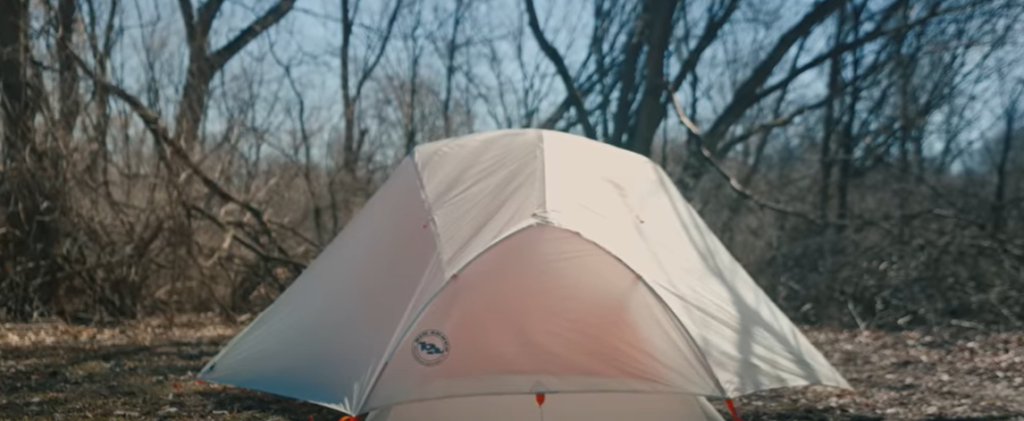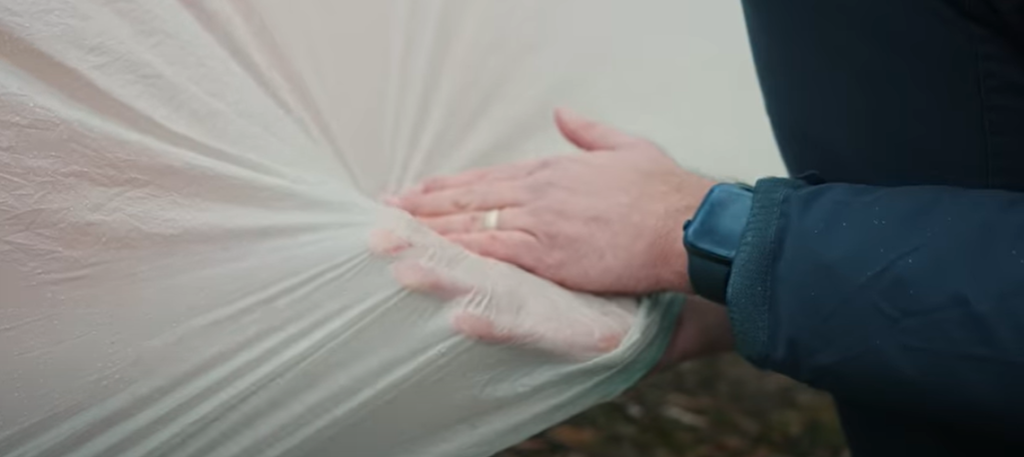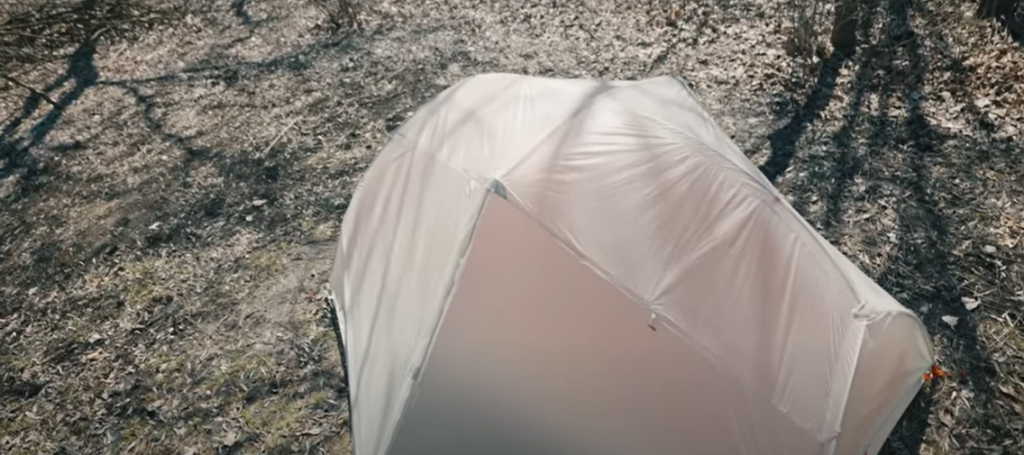A rain fly is a crucial and indispensable component of any camping tent. It serves as an additional protective layer that covers the outer shell of your tent, shielding it from a myriad of environmental elements, particularly rainfall. By effectively repelling water, it helps to prevent leaks and moisture from seeping into the tent, ensuring a dry and comfortable camping experience. Rain flies come in a variety of sizes and shapes, designed to perfectly fit and complement the specific structure and configuration of the tent. Whether you’re camping in a dense forest, on a mountain peak, or by a serene lake, having a reliable and well-fitted rain fly is essential to keep your camping adventure dry and enjoyable.
What is a Rain Fly?
A rain fly, also known as a tent fly or rain tarp, is a durable and weather-resistant protective covering that is securely attached to the exterior of a camping tent. Typically crafted from high-quality materials like waterproof nylon or polyester, this essential camping gear is meticulously designed to shield the tent from rainwater, preventing any unwanted leakage or moisture seepage. By acting as a reliable barrier against precipitation, the rain fly ensures a dry and comfortable camping experience even during unexpected downpours, allowing outdoor enthusiasts to fully enjoy their time in nature.[2]

Importance of a Rain Fly
Having a well-constructed rain fly is crucial for any camping excursion, as it provides an extra layer of protection against the elements. Not only does it keep your tent dry, but it also helps to prolong its lifespan by preventing any water damage that may occur over time. A rain fly also acts as an effective windbreaker, helping to reduce drafts and maintain a comfortable temperature inside the tent. Additionally, it can provide shade and protection from sunlight, making it an essential component for camping in hot and sunny climates.[2]
Components of a Tent Rain Fly
A typical rain fly consists of four main components – the body, guy lines, stakes, and grommets. The body, which is typically made of durable and weather-resistant material, serves as the primary section of the rain fly that covers the top and sides of the tent, providing crucial protection against rain, wind, and other elements. The guy lines, made of sturdy rope or cord, are strategically attached to the rain fly to help secure it in place and prevent flapping or sagging during adverse weather conditions. Stakes, often made of lightweight yet sturdy materials like aluminum or steel, are used to anchor the guy lines into the ground, providing stability and ensuring that the rain fly stays securely in place. Lastly, grommets, which are reinforced holes with metal or plastic rings, are strategically placed along the edges of the rain fly. These grommets allow for easy attachment and adjustment of the rain fly to the tent, providing versatility and convenience for campers.[2]
The Role of a Rain Fly
Protection from Rain and Moisture
The primary function of a rain fly is to provide exceptional protection from rain, sleet, and snow. Crafted with high-quality waterproof materials, it forms a robust shield around the tent, effectively preventing any water from seeping into the tent’s interior. This reliable barrier ensures that campers stay dry and comfortable, even in the harshest weather conditions.
But the benefits of a rain fly don’t end there. By effectively safeguarding against moisture build-up, it actively prevents the growth of mold and mildew. This not only contributes to a cleaner and more hygienic camping experience but also helps to extend the lifespan of the tent itself. With a rain fly in place, campers can enjoy their outdoor adventures with peace of mind, knowing that their shelter is fortified against nature’s challenges.[1]

Shelter from UV Rays
In addition to its exceptional rain-repelling capabilities, a rain fly also serves as an effective shield against harmful UV rays. When camping in hot and sunny climates, the scorching sun can be relentless, intensifying the discomfort and posing potential risks for campers exposed to prolonged periods of direct sunlight. However, with the presence of a rain fly, campers can find solace in the added shade and protection it offers. By creating a cool and shaded environment inside the tent, the rain fly not only helps regulate the temperature, but also ensures campers can fully enjoy their outdoor adventure without the worry of sunburn or overheating. So, whether you’re lounging inside your tent during the day or seeking refuge from the midday heat, a rain fly is your trusty companion in providing a more enjoyable and safe camping experience.[1]
Temperature Regulation
A rain fly is not only beneficial for protecting against rain and UV rays but also plays a crucial role in regulating the temperature inside the tent. By creating a barrier between the tent’s exterior and interior, it helps to reduce drafts, keeping campers warm and comfortable even on chilly nights. Similarly, during hot weather, the rain fly provides much-needed shade and ventilation, ensuring a cooler and more comfortable environment inside the tent. This temperature regulation is crucial in providing a better camping experience, making the rain fly an essential component of any well-equipped camping gear.[1]
Types of Rain Flies
Full-Coverage Rain Fly
A full-coverage rain fly, also known as a “flysheet,” is the most commonly used type of rain fly found on tents. It offers comprehensive protection against rain, wind, and other elements by extending down to cover the entire exterior of the tent, including windows and doors. This feature ensures that no part of the tent is exposed, keeping you dry and comfortable even during heavy downpours or gusty winds. Whether you’re camping in the mountains or by the beach, a full-coverage rain fly is a reliable choice that provides peace of mind in areas with unpredictable weather conditions.[4]
Roof-Only Rain Fly
As the name suggests, a roof-only rain fly covers only the top of the tent, leaving the sides exposed. This design choice offers a lightweight and compact solution, perfect for backpackers or hikers seeking to minimize the weight and bulk of their gear. Although not as effective as a full-coverage rain fly in protecting against wind and moisture, a roof-only rain fly still provides ample protection against light rain while ensuring adequate ventilation for comfortable camping in warm weather. Its minimalist design allows campers to immerse themselves in nature while enjoying the soothing sound of raindrops gently hitting the tent’s roof.[4]
Vestibule Rain Fly
A vestibule rain fly is a partial rain fly that creates an extended canopy over the entrance of the tent. This design offers additional shelter for storing gear or shoes, providing more space inside the tent and reducing clutter. While not as comprehensive as a full-coverage rain fly, it still provides adequate protection against light rain and wind while allowing for good ventilation inside the tent. A vestibule rain fly is a popular choice for car campers or those who prefer to have extra storage space for their camping gear. With its convenient design, it offers the best of both worlds – protection and convenience.[4]

Attaching and Setting Up a Rain Fly
Attaching a rain fly to a tent is a straightforward process that requires only a few simple steps. Start by laying out the rain fly on top of the tent, making sure it is aligned correctly and covers all sides evenly. This ensures that the rain fly will provide comprehensive protection against rain and other elements.
Next, attach the rain fly to the tent using the grommets or clips provided, securing it tightly in place. This step is crucial to prevent any gaps or loose areas that could compromise the effectiveness of the rain fly. By ensuring a secure attachment, you can have peace of mind knowing that your tent will stay dry and shielded from the elements.
Finally, stake down the rain fly using tent stakes or tie-downs to keep it securely in place. This step adds an extra layer of stability and security to the rain fly, especially in windy conditions. By firmly anchoring the rain fly to the ground, you can trust that it will stay put and continue to provide reliable protection throughout your camping trip.
Remember, setting up the rain fly correctly is essential to maximize its effectiveness. By following these detailed steps, you can ensure that your tent remains dry, cozy, and fully shielded from any unexpected weather conditions. So, take the time to properly attach and secure your rain fly, and enjoy a worry-free camping experience.[3]
Maintaining Your Rain Fly
Proper care and maintenance are crucial to prolonging the lifespan of your rain fly. After each camping trip, make sure to clean and dry the rain fly thoroughly before storing it away. This step helps prevent mold or mildew growth and extends the life of your rain fly.
Additionally, inspect the rain fly for any tears or damage that may have occurred during use. Minor tears can be repaired using a repair kit or by applying a patch to the damaged area. In case of significant damage, such as large tears or holes, it may be necessary to replace the rain fly entirely to ensure optimal protection during future camping trips.
Regularly cleaning and inspecting your rain fly will not only maintain its good condition but also contribute to a more enjoyable camping experience. By taking care of your gear, you not only save money in the long run by avoiding costly replacements, but you also ensure reliable and effective protection against the elements every time you venture outdoors.
Remember, a well-maintained rain fly is your shield against rain, wind, and other unpredictable weather conditions. Invest the time and effort in caring for your gear, and it will reward you with many memorable camping adventures in the years to come.[3]

When to Use and When Not to Use a Rain Fly
A rain fly is a crucial piece of gear for any camping trip, providing protection from the elements. However, there are situations where its necessity may vary. In areas with low chances of rain or during dry weather conditions, a rain fly may not be needed as the risk of precipitation is minimal. Nevertheless, it is always wise to exercise caution and bring a rain fly along, just in case the weather takes an unexpected turn.
On the other hand, when camping in areas with high chances of rain or unpredictable weather patterns, a rain fly becomes an absolute must-have. It not only shields you from rain but also protects you from wind and other harsh elements, ensuring a comfortable and enjoyable camping experience. Imagine the difference it can make between a damp and uncomfortable night spent outdoors and a dry and cozy one.
So, if you’re planning to camp in regions known for sudden weather changes or camping in seasons prone to rain, it is highly recommended to include a rain fly in your camping gear. Don’t underestimate the value of this essential piece of equipment in providing you with a worry-free and memorable camping adventure.[3]
FAQ
Why is it called a fly on a tent?
A rain fly, also commonly referred to as a “fly,” is named as such due to its design of being suspended above the tent, similar to the way a fly hovers over something. This essential camping gear component serves the primary purpose of providing reliable protection from rain and other elements that have the potential to seep through the tent’s body. By creating an additional barrier, the rain fly acts as a shield, safeguarding campers and their belongings, ensuring a dry and comfortable camping experience even in inclement weather conditions.

What is the rain cover on a tent called?
The rain cover on a tent is also known as a “rain fly.” It serves as a protective layer that shields the tent from rain, wind, and other elements. This essential piece of gear is often made of waterproof material and typically covers the entire top and sides of the tent for maximum protection. A properly attached and secured rain fly can significantly enhance a tent’s weather resistance, providing a dry and cozy shelter for campers to enjoy their outdoor adventures.
Is A rain fly waterproof?
Yes, a rain fly is designed to be waterproof and prevent water from entering the tent. However, it is essential to note that not all rain flies are created equal. Some may offer better protection than others, depending on the material used and how well it is attached and secured to the tent. It is crucial to ensure proper care and maintenance of your rain fly to maintain its waterproof capabilities and provide reliable protection against the elements during your camping trips. So, it is always wise to check the weather forecast before heading out and make sure you have a sturdy and properly attached rain fly on hand for those unexpected rain showers.
Can you wash a rainfly?
Yes, you can wash a rain fly by hand using mild soap and warm water. It is essential to ensure that the rain fly is completely dry before storing it away to avoid any mold or mildew growth. Additionally, some manufacturers may provide specific instructions for washing their rain flies, so it is recommended to check the care label before cleaning your gear. Properly maintaining and storing your rain fly will help prolong its lifespan and ensure effective protection during future camping trips.
Why is my rainfly leaking?
If your rain fly is leaking, it could be due to various factors such as improper installation, damage or tears on the fabric, or wear and tear over time. It is crucial to ensure that the rain fly is properly attached and secured to the tent to prevent any gaps where water can seep through. Additionally, regular cleaning and inspection of your rain fly can help identify any potential issues and allow for timely repairs or replacements. Remember, proper maintenance of your rain fly is key to its effectiveness in protecting you from the elements during your camping adventures. With the right care, your rain fly can provide reliable protection for many outdoor trips to come.
Why is my tent rainfly sticky?
If your tent rain fly feels sticky to the touch, it could be due to mold or mildew growth. These microorganisms thrive in damp and humid environments, making a tent rain fly the ideal breeding ground. To prevent this from happening, make sure to thoroughly clean and dry your rain fly before storing it away. If you notice any mold or mildew on your rain fly, wash it with a mild soap and warm water solution and leave it to air dry completely before storing.
Useful Video: 5 mistakes EVERY new camper makes in WET WEATHER
Conclusion
A rain fly is an essential piece of gear for any camping trip, providing necessary protection from unpredictable weather conditions. While its necessity may vary depending on the location and season of your camping adventure, it is always wise to bring a rain fly along, just in case. Proper care and maintenance of this gear can go a long way in ensuring its effectiveness and longevity, allowing you to enjoy many comfortable and worry-free camping experiences. So, next time you’re planning a camping trip, don’t forget to pack your rain fly! Happy camping!
References:
- https://wildernessredefined.com/what-is-a-rain-fly-and-do-you-need-one/
- https://campingmastery.com/what-the-heck-is-a-rain-fly/
- https://www.mortonsonthemove.com/tent-rainfly/
- https://wildernesspack.com/what-is-a-rain-fly/










Leave a Review